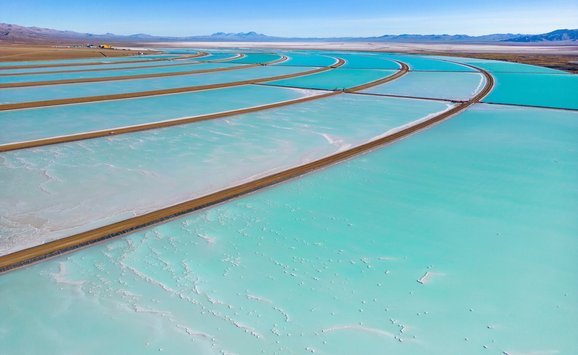Experts argue over the ability of society to meet the challenge of sustainable development. Will technology continue to satisfy the wants of society without serious resource constraints, or is there a limit to the productivity of resource use? Those who believe there is such a limit ask if the technology behind the optimists' faith in increasingly productive resource use really exists. Perhaps a more important question is whether new principles for allocating scarce resources will be put into practice.

A Woody Guthrie refrain goes, "ain't no country extra fine that's just a mile from the end of the line." His song—"End of My Line," written in 1941—praised the new dams that were bringing cheap electricity to the Columbia River Basin. The line he mentions is, of course, a power line.
Today's songs about the Columbia River are more likely to praise salmon than power lines. Still, Guthrie reminds us of where priorities lay, even in the United States, only two generations ago. As we now face the challenge of a sharply growing and mostly poor world population, it is an instructive reminder.
The 1987 report of the World Commission on Environment and Development, Our Common Future (commonly known as the Brundtland Report), is less lyrical than Woody Guthrie, but is equally instructive. It insists that we attend to the economic needs of the world's people, as well as to the quality of their environment. And the report rests on the principle of sustainable development, arguing that we must meet the needs of the present without compromising the ability of future generations to meet their own needs.
This is a tall order, but the Brundtland Report takes it on with a remarkable sense of hope. Thus the report "is not a prediction of ever increasing environmental decay, poverty, and hardship in an ever more polluted world among ever decreasing resources. We see instead the possibility for a new era of economic growth, one that must be based on policies that sustain and expand the environmental resource base."
Not everyone sees it this way. For example, Bill McKibbin, in "The End of Nature," argues that we simply consume too much, and he questions "the industrial basis of our civilization, the need to forever grow in wealth and numbers, and the entire way we live." Paul and Anne Ehrlich focus on the population problem. Some of their sense of gloom comes through in their observation, in The Population Explosion, that "if current population trends continue, [they] could bring us essentially to the same sort of world as would be left after a nuclear war and a nuclear winter—just more slowly." And in "Land, Energy, and Water: The Constraints Govern Ideal U.S. Population Size," David and Marcia Pimentel foresee such impressive resource constraints that if "the U.S. population wishes to continue its current high level of energy use and standard of living and prosperity, then its ideal population should be targeted at 40–100 million people."
This is pretty heady stuff, and makes it worth asking whether the optimism of the Brundtland Report is misplaced. Can we manage our affairs in a sustainable way? And if we can, what are the chances that we will? Unfortunately, the first question has a more promising answer than the second.
The challenge is formidable. Demographers estimate that world population might level out at more than ten billion people sometime in the twenty-first century. More than 90 percent of this growth will occur in developing countries, where the current average per capita income is about one-tenth of that in the member countries of the Organization for Economic Cooperation and Development (OECD). For the developing world to achieve, say, one-third of the per capita income level that the developed nations enjoy, the world economy would have to expand more than thirtyfold over the next one hundred years.
Daunting as this challenge may seem, we have little option but to face it. If meeting the economic needs of the poor is not reason enough, the Brundtland Report stresses that environmental degradation equals the absence of development. In short, neither rich nor poor can have economic or environmental security without economic development.
Nor is it easy to conclude that a doubling of the world's population is a mistake requiring drastic remedy. The world's population is growing in large part because improvements in public health have depressed the mortality rate in the developing nations, a humanitarian effort worthy of some praise. The problem now is to make the predictable lag between reduced mortality and lower fertility as brief as possible. While fertility control is clearly a part of the solution, economic development is also a necessary contributor to the social change that will persuade parents to have fewer children.

Sharing financial and knowledge resources with the developing world, where economic and environmental security are hardest to achieve, seems prudent
Can technology save us?
For these reasons, it seems to me the vision of the Brundtland Report is inescapably correct. But if we accept the need for economic development and the inevitability of some population growth, then we must look to technology as the chief engine of sustainability. The central issue is whether technology—both hardware and the knowledge to use it wisely—will allow us to manage our natural and environmental resources sustainably. And this issue is in dispute.
On one side stand those who believe that technology will continue to satisfy the wants of society without serious resource constraints. These optimists—many of them economists—believe in markets in which incipient scarcity triggers an increase in the price of the affected resources. Responding to this price signal, technology emerges that lets us use scarce resources more efficiently.
History supports this view. According to the Brundtland Report, the global economy multiplied fiftyfold in the last hundred years, four-fifths of this growth coming since 1950. Yet the prices of many natural resources have not risen much in real terms for decades, suggesting that the market has dealt with resource scarcity at acceptable costs. Moreover, economists have shown that markets can also efficiently resolve scarcities of environmental resources, given the right price signals.
The alternative view raises the possibility of ultimate limits. Consumption of material goods cannot forever increase, and in any case we should prefer quality over quantity of consumption. From thermodynamics comes the idea that it takes an ever-increasing amount of work to put nonrenewable resources into usable shape—one cannot recycle the same beer can forever. We are ultimately left to rely on the sun's energy as our sole source of support. When this daily ration of energy falls below that needed to overcome the dissipative use of nonrenewable resources, economic growth ceases.
Of course, growth will end someday, but this conclusion is only a troubling curiosity if technology gives us ample time before the limits are reached. It is on just this point that the skeptics' argument is the most powerful, for they simply insist that productivity of resource use cannot increase forever. Thus the optimists had better be prepared to show that real technology exists to support their assertion. And given the constraint of sustainability, it had better be the right kind of technology.
This is a heavy burden of proof, as the example of agriculture suggests. The optimist need only assume that agricultural productivity will grow at its historical rate to show that there will be plenty of food and fiber for the population of the next century. But present agricultural technology can do environmental harm by introducing polluting fertilizers and pesticides, and by encouraging the overuse of marginal land and water resources. What is required is not simply more of the same, but new technologies that produce more food and fiber without the environmental consequences of the current ones.
The same situation—a technology that overcame resource constraints in the past but may not do so in the future—exists in regard to other natural resources. Energy analysts argue that we can meet future energy needs and solve the pollution problems that energy creates, but not with yesterday's technology. We need not cut old-growth and tropical forests to have adequate timber supplies, but it will take an approach different from today's. The world's water resources are ample to sustain a much larger population, though not if we manage these resources as we do now.
On balance, the technological possibilities for providing a growing population with at least an adequate level of economic well-being seem encouraging. Still, the optimists have yet to meet the test of showing that there is real technology behind their faith in increasingly productive resource use. Surely, closing on this issue must be one of the chief tasks facing economists and technologists in the immediate future.
From principles to policy
That the available evidence is equivocal leads to a difficult challenge for policy. We have a goal that seems to be inescapable, but our ability to meet that goal is uncertain. Given this dilemma, what policies for allocating our scarce financial, natural, and environmental resources give us the best shot at success?
In an age of sustainable development, new principles for allocating resources apply. These principles are still too unfocused to be called policy prescriptions. Yet their weight is already beginning to be felt, and it is not hard to see their major outlines.
Above all, we must invest heavily in creating the new knowledge we need to increase the productivity of our use of natural and environmental resources. What is required is a long-term technological vision and a corresponding commitment to it—an act that is both financially expensive and politically rare. Still, the payoffs are immense.
Second, we should rely on decentralized decision making to allocate resources—preferably market mechanisms. Markets need the right price signals work properly, and so, in the language of economics, externalities must be internalized in private markets. We can expect greater interest in getting prices right, as the consideration of carbon taxes to contain CO2 emissions suggests. Although not an easy task, getting the prices right is infinitely preferable to the prospect of global command-and-control regulation.

Optimists have yet to show that there is real technology behind their assertion of increasingly productive resource use.

Third, global interdependence means sharing scarce financial and knowledge resources. The developing world is the chief battleground for achieving economic well-being and environmental sustainability, but most of the financial and technological weapons exist in the industrialized nations. Inevitably, we must face the issue of transferring these resources from the wealthy to the poor, even at some expense to the former.
Finally, we must be more risk-averse in deciding to use resources. Human activity can now disturb global physical and ecological systems, such as the climate. Until we know more about some of these systems, it is not unreasonable to suspect that they are as likely to be fragile as robust. This situation enlarges the danger of inadvertently and irreversibly crippling a valuable resource. Since the obvious way to avoid irreversible damage is not to use a resource at all, it follows that there will be a rising level of aversion to risk in decisions about resource use.
The obvious difficulty of successfully applying these principles in shaping public policy would seem less formidable if our record of managing scarce resources were not so dismal. Many nations subsidize agriculture at great economic and environmental cost. The United States pays too little for energy, a fact brought home by the recent turmoil in the Middle East. We refuse to manage water according to its true value, and so seem to have too little of it.
Nor are our environmental policies models of careful resource use. The toxic pollution control provisions of the Clean Air Act amendments will cost $5 to $10 billion per year to save at most a few hundred cancer cases annually. It is hard to imagine that this expenditure could not be put to better use even to reduce the incidence of cancer in the United States. More globally, William Ruckelshaus finds "something unsettling about a world where every day twenty-five thousand people die from easily preventable waterborne diseases. And yet we continue to argue in America about ever smaller increments of pollution abatement with diminishing health benefits."
It is surely elementary that, if sustainable development means anything at all, it means not wasting resources. Nevertheless, we seem more often than not to adopt policies that only make matters worse—that create scarcity where none need exist. In the glow of our devotion to the principle of sustainable development, this seems a special hypocrisy.
That the task is hard should not weaken the conviction that we must seek to provide adequately for the growing population of our planet. Old technology that is unsustainable does nothing to diminish the importance of developing new technology that is. And our penchant for making matters worse hardly means that we ought to ignore policies that make matters better. What all this does say, however, is that it is time to put our practice on a par with our principles.

Robert W. Fri is president of and a senior fellow at RFF.
A version of this article appeared in print in the January 1991 issue of Resources magazine.







